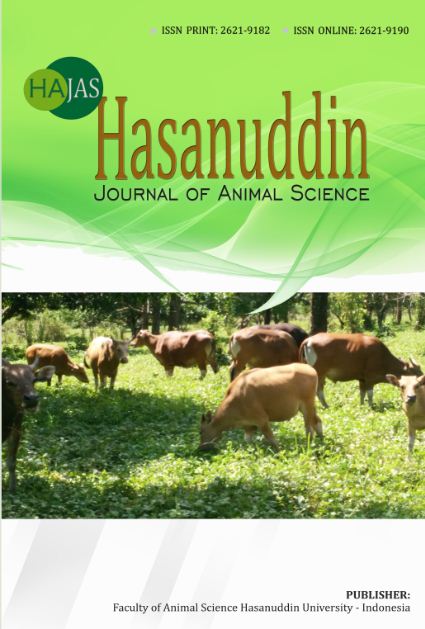Case Study of Impact and Risk Factors of Brucellosis (Brucella abortus) in Beef Cattle
Abstract
Bovine Brucellosis is endemic in Polewali Mandar Regency with a prevalence above 2%. Control programs implemented through active and passive surveillance, public awareness of the impact of the disease, and tests and slaughter have not been able to reduce the prevalence rate. This study aimed to examine the impact and risk factors of brucellosis on the productivity of beef cattle in Polewali Mandar Regency. A total of 100 primary data from cattle farmers related to brucellosis were used in this cross-sectional study. Descriptive analysis was employed to determine the parameters that were important in the occurrence of brucellosis. To establish risk factors, a univariate logistic regression analysis was carried out and revealed that odds of infection were significantly higher in history of abortion (OR = 11.82, 95% CI: 4.08 - 34.19, p < 0.001) and in gestational age (OR = 0.0214, 95% CI: 0.0063 - 0.0724, p < 0.001) and in dry season than wet season (OR = 14.89, 95% CI: 4.97 - 44.62, p < 0.001). The brucellosis control program through mass vaccination must immediately become a recommendation for regional and central governments to reduce brucellosis transmission to prevent economic impacts and losses for farmers, particularly the public health risk.
Keywords: brucellosis, beef cattle, impact, risk factor, productivity
Downloads
Published
Issue
Section
License

This work is licensed under a Creative Commons Attribution-NonCommercial 4.0 International License.











